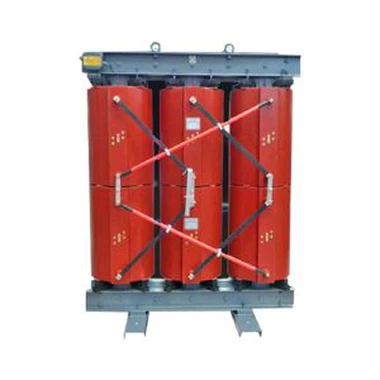On-site Installation Of High Voltage Switchgear
Oct 23, 2020
After the switchgear arrives at the site, it is usually installed by the user or the installation unit. The contents mainly include: the cabinet body and the cabinet, the connection between the main bus and the lower bus, the cable head production and the upper and secondary cable lead connections And the secondary terminal block wiring, etc. The matters needing attention in the construction process are:
⑴ The cabinet body should not be impacted, so as to avoid deformation of the skeleton, or the thin panel bumps and the surface coating is bumped, which affects the appearance.
⑵The level of foundation channel steel required for installation of side-by-side cabinets (allowable error per meter≯1mm).
⑶The height of the base of the handcart cabinet should be considered for the convenience of handcart access, and no steps should be formed on the floor.
⑷ Protect the vacuum interrupter during transportation and installation, especially when installing the main bus on the top of the cabinet, cover the top of the vacuum switch with a hard plate to prevent tools and screws from falling and hurting the interrupter.
⑸It must be done when self-matching the main bus;
a. The bus bar connected with electrical components should be connected reliably at the joints so as not to affect the flow capacity.
b. When the current is large, the joints must be tinned.
c. The conductive contact surface of bare copper and bare copper must be coated with protective agent (conductive paste, petroleum jelly, etc.) to prevent oxidation and moisture.
⑹The secondary lead cables of the cabinet must be laid according to the designated path, and must not hinder the movement of moving parts or be stepped on during future maintenance and inspection.
(7) The grounding main bus of the cabinet should be reliably connected to the pre-buried grounding grid of the installation foundation to ensure continuous reliability of grounding.
After the cabinet installation is completed, the handover test shall be carried out in accordance with the relevant regulations of the Ministry of Electric Power.
2. Operation and maintenance matters needing attention
⑴The power distribution room should be moisture-proof, dust-proof, and prevent small animals from entering.
⑵ All metal parts should be rust-proof (painted with varnish or colored paint), and moving parts should be lubricated. Check whether the screws are loose or not, and the dust should be removed in time.
⑶ Observe the status of each component, whether there is overheating, discoloration, noise, poor contact, etc.
⑷For vacuum circuit breaker:
a. Power frequency withstand voltage should be carried out when possible, and the vacuum degree can be indirectly checked.
b. For the glass bulb arc extinguishing chamber, observe whether the internal metal surface is black, whether there is glow discharge, etc.
c. When replacing the arc extinguishing chamber, the conductive rod should be clamped, and the bellows should not be subjected to torsion moment. The conductive clamp and the conductive rod should be clamped and connected.
d. The fuse specifications of the closing circuit cannot be used too large, and the melting characteristics of the fuse must be reliable.
e. When the closing fails, the fault must be checked: the electrical aspect may be that the power supply voltage is too low (the voltage drop is too large or the power supply capacity is not enough), the closing coil is damp and the turn-to-turn short circuit is caused, and the fuse is broken; the mechanism may be closing The amount of buckle buckle is too small, the angle of the auxiliary switch is not adjusted well, and the power is cut off too early.
f. When the opening fails, the fault must be checked: Electrically, it may be that the power supply voltage is too low, the transfer switch is in poor contact, and the opening circuit is broken; the mechanical aspect may be that the opening coil stroke is not adjusted properly, the iron core is stuck, and the lock is locked. The amount of buckle is too large, and the screw is loose.
g. The switching time of auxiliary switch contacts must be carefully adjusted. Switching too early may not end, and switching too slow will cause the deadlock coil to be charged and burned for a long time. The correct position is to close at low voltage and just close.
⑸For the isolation switch:
a. Pay attention to whether the blades and contacts are twisted, and whether they are in place and in good contact when closing.
b. Whether the fracture distance is ≥150mm during opening.
c. Whether the support and push rod porcelain bottle is cracked or the glue fitting is loose.
d. Whether the interlocking device between the operating mechanism and the circuit breaker is normal and reliable.
(6) Isolation of handcarts
a. The occlusal surface of the plug should be coated with protective agent (conductive paste, petroleum jelly, etc.),
b. Pay attention to whether the plug has obvious deflection and deformation.
c. Pay attention to whether the plug occlusal surface is welded or not during maintenance.
(7) For current transformer:
a. Pay attention to whether the joint is overheated, whether there is noise and odor.
b. Whether the insulation part is cracked or discharged.
c. Whether the lead screw is loose or not, it must not be opened to avoid induced high voltage, which may damage the safety of operators and equipment.
(8) When the switchgear has not been put into operation for a long time, the main primary component compartment (such as the handcart room and cable room) should be heated and dehumidified before putting it into operation to prevent condensation from affecting the external insulation of the equipment.






